Peru
Why is it a culture?
According to the book by Cesar Ferreira and Eduardo Dargent-Chamot say that anthropologists have estimated that music has been listened and played in Peru for over 10,000 years.
Still today some per-Hispanic instruments are still used to play Andean music.
The Peruvian coast was also the site for the development of popular black music.
Oldest musical genre that still exist in Peru is the yaravi. It is a slow rhythm full of drama and melancholy.
Mestizaje- Peruvian version of the concept of the melting pot in American in which all ethnic groups along with their unique cultural traits share a common social space, which forms the Peruvian nation.
Values and Norms
Peruvians have a love for ceremonial forms. The solemnity of official ceremonies headed by the chief of state, the hoisting of the national flag or the martial spirit of military parades, and the splendor of religious rites all manifest this propensity for the baroque.
Good-naturedness and ready hospitality are other qualities common among Peruvians. The warm reception and pleasant treatment extended to visitors, the exemplary courtesy shown toward women, and the amenability to both friendship and revelry all testify to this ingrained kindness.
Beliefs and Attitudes
88.9% or 26 million of Peruvians identify themselves as Catholic.
The bishops and the priests play an active roles in locals affairs in most communities, villages, towns, and city has its official church as well as special religious days celebrated every year to honor a patron saint.
Each year in October is the beginning of the celebrated Lord of Miracles Fair, or Feria del Senor de los Milagros, the oldest and most important bullfighting even in the Americans.
During March or April of each year, they celebrate the Holy Week (Semana Santa) in the city of Ayacucho in the southern Andes. This event is the most traditional religious festivities in Peru.
“Saturday is a day of rejoicing in the resurrection of the Lord.”
February 2nd of each year celebrate Virgin of the Candelaria in the city of Puno. The Virgin of the Candelaria is a colorful and vibrant feast on the shores of Lake Titicaca that attracts many visitor as well as number of musicians and dancers from the Altiplano area.
June 24th of each year Peru celebrates the Festival of St. John honoring John the Baptist, the same John that baptized Jesus. The festival takes place in several jungle towns and cities. The traditional dish eaten during this festival is called juane, a mixture of herbs, rice, and chicken wrapped in bijao or banana leaves. Whether religious or not, the celebration find a fitting stage for their music, dance, and numerous expression of religious faith.
Traditions
The traditional celebrations of Peruvian culture revolve around the holidays of Roman Catholicism as brought to the area by the Spaniards, but have been influenced and altered by the religions of the Andean region. An example of one of the religious syncretism is the festival of Corpus Christi, celebrated in Cusco, involving a processional of saints to meet the resurrected Christ, as well as feasts of traditional foods and drink. In the high mountains or the jungle in the smaller villages, the traditional celebrations relate to agricultural events rather than Catholic holidays.
There are many fiestas each year in Peru, but the three big celebrations outside of the Catholic tradition are for National Independence Day, Battle of Arica, and Carnival. Independence day is celebrated over three days, July 28-30, and involves a presidential speech alongside such festivities as fireworks and bullfighting. On this holiday, Peruvians pay tribute to the great patriots of their nation and the sacrifices that were made. The Battle of Arica (June 7) is also known as Peruvian Flag Day. It is a solemn holiday, honoring a group of Peruvian soldiers who defended the Peruvian flag, and involves reciting the Peruvian pledge of allegiance. Carnival falls immediately before the Catholic holiday of Lent, but is not a particularly Catholic celebration. It is a boisterous time, with concerts, street parties, masks, dancing, and water fights, which celebrates the freedom and carelessness that precedes the solemnity of Lent.
Sense of self and space
Self-discipline is a highly valued trait among Pervians, especially among men. This may be perceived as stoicism among healthcare workers and can necessitate a thorough assessment, especially regarding pain. Control of one’s emotions is also a highly regarded trait, and this must be taken into account when one may expect to see mourning.
It is considered polite to greet every person one encounters over the course of the day, so it is especially important for nurses to smile and introduce themselves to the family of the patient who may be in the room. Appropriate contact for greetings, include handshakes between men and women, and (when familiar) a kiss on the right cheek between women. In regions around the Andes, it is considered rude to make continual eye contact or stare, so it is important to evaluate the response of a Peruvian client and adapt accordingly.
Despite the formality inherent in their professional interactions, Peruvians tend to have a closer sense of personal space than Americans. However, if you need to beckon someone closer in Peru, it is considered rude to crook your finger. It is more polite to turn your hand down and sweep fingers toward yourself to indicate that a person should move closer.
Language
The Spanish language was forced upon the native Peruvians during the conquest in the 1500s and has since become the primary national language. Traditional languages, such as Quechua and Aymara are still spoken in many areas of the country, though Spanish is encouraged by the government and educational system. For this reason, the Spanish spoken in Peru is of a unique dialect, with numerous additional phrases from the traditional languages.
The Quechua language was originally spoken by the Incas, and was spread throughout the country as the Incas conquered other native peoples. Upon Spanish conquest, it became a language of rebellion, rather than domination. Aymara is primarily spoken by the Indian population in the southern region of the country, and there are many other languages spoken by indigenous tribes along the Amazon basin. These languages, combined with an African influence, cause Peruvian Spanish to be an extremely diverse language.
Food, Dress, and Time Consciousness
Peru’s cuisine evolved from the distinct blending of European and native cultures, which represent the original food seen in Peru. It’s known for it’s exquisite taste as well as it’s variety. Peru is a major fishing nation and so fish is common in the Peruvian culture. Peruvian food varies among the different regions. The most important seasoning used to prepare meals in Peru is known as “aji”, which is translated as pepper in English. Typical traditional Peru food includes hot peppers and garlic. Potatoes and rice are often served with most meals. Peruvian food can be divided into two main cuisine regions. The first zone is called the coastal zone, which is known for Ceviche, the national dish of Peru. Ceviche is a raw fish marinated in lime and pepper sauce. The coastal diet includes mainly seafood and plantains. The second zone, the Highlands, are known for their different kinds of meats, corn, and potatoes. The national drink in Peru is called pisco sour, which consists of grape brandy, egg white, lemon, and cinnamon. Peruvian festivals are accompanied by vast amount of eating and drinking. Certain Peruvian ceremonies, such as the observation of holy week, has food restrictions. During this week, the Peruvian culture consumes seafood because meat is religiously restricted. Peruvian food in the last few years has resulted in oriental restaurants. Peru is the country with the most common Chinese restaurants in Latin America. Traditional Peruvian appearance is a direct result of pre-Hispanic influences with European clothing. Western clothing is becoming more popular throughout Peru. Traditional native clothing is much more commonly seen in the Highlands. Coastal regions often wear lighter, baggy clothing with straw hats. Traditional Peruvian clothing includes vibrant colored dresses and ponchos with various patterns. A person’s home village can be identified based on the hat they are wearing. Time consciousness in the Peruvian culture is very relaxed. Being fashionably late is almost a national trait in Peru. Because Peruvian culture is more laid back when it comes to time, patience is vital.
Relationships and Social Organization
While Peru does not claim to hold any official recognition of a caste system, there is an unmentioned division of classes through race and ethnicity. Peruvians of a more native ethnicity are regarded by the country to be at a slightly inferior class than the Peruvians of European descent. This division of classes is related to associated levels of education and social economic status in comparison to the rest of the country. The native Peruvians tend to live in the rural areas of the country, holding labor jobs which require less educational demands than careers in the city. This division of classes has been rooted for centuries in the culture based on the idea that white European descent was superior to the “savage” ways of the natives. This idea is not specific to Peru, as we have seen this same idea behind many conquered people.
On a more personal level, the gender roles and roles of different members of the family differ from other cultures around the world, however, they follow in a sense the traditional gender roles as seen in other Latin American nations. Families in Peru are patriarchal, with the husband/father being at the head of the household and the wife/mother put in charge of the more domestic running of the household, including caring for the children. As common in other Latin American cultures, the women are breaking out of their more traditional roles and gaining more respect and power in the urban job market. Family is also very important in the Peruvian culture. As common in Latin American countries, family comes first. Much respect is given to elders and contribution to family is a lifetime duty.
Mental Process and Learning
In Peru, education holds high importance. Education is seen as the ticket out of poverty to many citizens. The average number of years completed of school in Peru is around 7 years. Many people of the country view education as such a powerful tool because the people that hold high paying jobs live and work in the larger cities. The people viewed as more powerful in those cities are among the Spanish speaking educated. Primary schools in the country have been spreading at fast rates over the past few decades. These schools are the translation to the American elementary school. These schools are now found in most every village in the country. Class is taught in primary schools first in the rural, native language and then the children begin to learn Spanish. All secondary schools are taught in Spanish. Secondary school is the educational portion from about 12 years old to 16 or 18 years old.
The estimated literacy rate in Peru is around 85%. This number reflects the number of adults in the country that are literate, not specific to Spanish literacy. Some of these adults are literate to the language of their rural villages. Higher education belongs to the Peruvians living in the cities with white collar jobs, more specifically, of European descent. Lower education is from the Peruvians living in rural villages, more specifically Indians, blacks and mestizos (of mixed European-Native American ancestry). For these people access to school and being able to attend school on a daily basis is a luxury many families cannot afford.
Work Habits and Practices
In general, the majority of the labor jobs belong to the unnamed lower class of Peru, the natives, blacks and mestizos. These labor jobs range from fishing, industrial manufacturing and farm work. Since much of the Peruvian economy depends on raw exports and manufactured imports, farming claims the most labor jobs, roughly 1/3. These farmers endure long workdays sometimes up to 15 hours of physically difficult work in extreme heat at many times at very high elevations. The urban population, which comprises about one third of the total country’s population, holds professional, white collar careers. Peru has been experiencing a professional “exodus” where the educated are seeking better paying careers outside of Peru. This has resulted in a significantly lower number of professionals than the country is capable of.
Statistics about Peruvians in America
The US Census Bureau estimates that as of 2008 there were 435,368 people of Peruvian origin living in the US, which makes up 1% of the Hispanic population, and 0.15% of the total population. Of these, 19.7% live in Florida, 17.2% in California, and 16% in New Jersey (Pew Research Center). The proportions of Peruvian Americans who are foreign born, as well as those who speak a language other than English at home are both significantly higher than those of the total US population. Peruvian Americans are similar to the total population in the proportion living under the poverty line, and the same is true of the proportions with disabilities.
The percentage of Peruvian Americans with a high school education actually exceeds that of total Americans, though the percentages are fairly equal when it comes to a Bachelor’s degree or above. It is important for healthcare workers to keep in mind that although there may be language barriers, the average Peruvian American as likely to have a college degree as the average American. It is always important to assess the educational level of a patient to determine where more teaching is necessary, and how this may be best accomplished.
Discrimination and Differences
One of the major cultural differences between Peru and United States is the living conditions of families. In the United States, once a person gets married, they rarely ever live with the family members of either spouse. However, Peruvian culture values family closeness. The whole family will live together for a large part of their life. Even after a member gets married, and even when the kids grow up and have good jobs, they still stay with their family instead of moving into their own place. In the United States, a majority of the young adults want to move out and experience their lives without being with their family members in the same house. Peruvian parents teach their children that living together with the whole family symbolizes respect to their older relative. According to Puccetti 2009, the action of abortion and even the talk of abortion is considered a cultural taboo in the Peruvian culture. Abortion is currently illegal in Peru. Because of this, there are fewer pregnancies being terminated in Peru than in the United States.
Health Risks
Robles et al. (2009), discusses the idea that Peru’s health issues lie in the lack of education and health awareness while emphasizing cervical cancer. The article is about a program offering eligible Peruvian women screenings for cervical cancer. The participation rate were around 1/3rd of the eligible. A trend that was noticed was that many of the women coming to the screening were completely unaware their risks or how to address them. Providing education and awareness should be a primary concern for nurses in Peru.
Top 5 Healthcare Concerns in Peru
- Reinfections are very common amongst Peruvian Adults after Antibiotic treatment of H pylori.
- Several years ago, abortion was considered one of the primary health threats for Peruvian women.
- 2 out of 5 women in Peru have been attacked, pushed, or shaken by their partners. The rate might be higher, some partners deny or don’t report the abuse.
- Males are rarely involved in family planning or violence prevention, and basic health education programs.
- Only 25% of those living in extreme poverty in Peru have access to healthcare, and malnutrition often manifests as stunted growth in this population.
References
Dargent-Chamot, E., Ferreira, C,. (2003). Culture and Customs of Peru. Greenwood press.
Soto, G., Bautista CT., Roth D., Gilman R., Velapatino B., Ogura M,. Dailide G., Razuri M., Meza R., Katz U., Monath T., Berg D., Taylor D., (2003). Helicobacter pyloi Reinfection Is Common in Peruvian Adults after Antibiotic Eradication Therapy. Gastrointestinal Physiology Working Bgroup in Peru. 188.
Flake, D., (2005). Individual, Family, and Community Risk Markers for Domestic Violence in Peru. Brigham Young University. 11(13).
Foundation for Sustainable Development. (2010). Health issues in peru. Retrieved from http://www.fsdinternational.org/ntlopps/country/peru/healthissues
Pew Research Center. (2009). Hispanics of Peruvian origin in the United States, 2007. Retrieved from http://www.pewhispanic.org
TravelEtiquette. (2010). Etiquette in Peru. Retrieved from http://www.traveletiquette.co.uk/EtiquettePeru.html
Amauta Spanish School. (2010). Peruvian fiestas: festivals and fiestas in Peru. Retrieved from http://volunteerworklatinamerica.org/amautaspanish/english/peru/fiestas.asp
Advameg, Inc. (2010). Culture of Peru. Retrieved from http://www.everyculture.com/No-Sa/Peru.html
US Census Bureau. (2010). Census 2000 demographic profile highlights: Peruvian. Retrieved from http://factfinder.census.gov/home/saff/main.html?_lang=en
Puccetti, R. (2009). Incidence of induced abortions in Peru… CMAJ. 2009 Feb
3;180(3):298-304. CMAJ: Canadian Medical Association Journal,
180(11), 1133. Retrieved from CINAHL with Full Text database.
McGhee, M. (2010, March 23). Do you live with your family? differences between peru
and the united states. Retrieved from http://www.livinginperu.com/features-1268-
art-culture-lifestyle-do-you-live-with-your-family-differences-between-peru-
united-states
Robles SC, Ferreccio C, Tsu V, Winkler J, Almonte M, Bingham A, Lewis M, Sasieni P. Assessing participationof women in a cervical cancer screening program in Peru. Rev Panam Salud Publica. 2009; 25(3):189–95.
Culture in Peru. (2010). In Countries and their Culture. Retrieved March 10, 2010, from http://www.everyculture.com/No-Sa/Peru.html
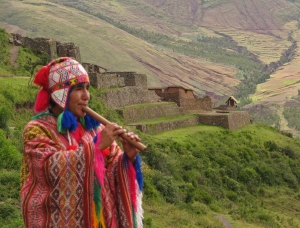

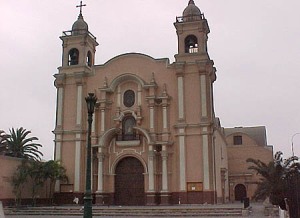
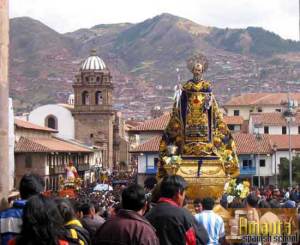
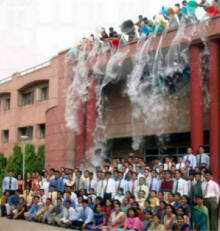
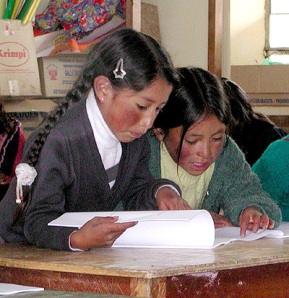
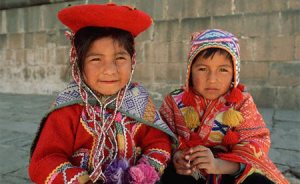
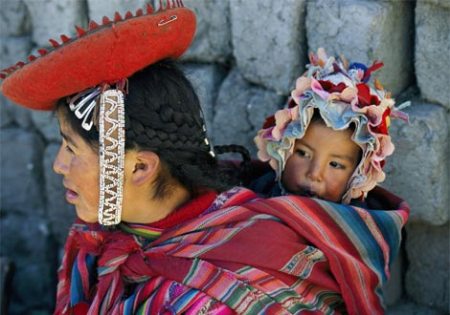
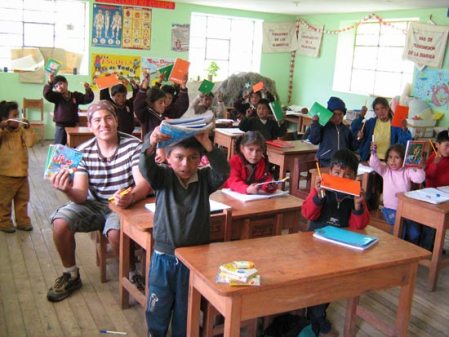
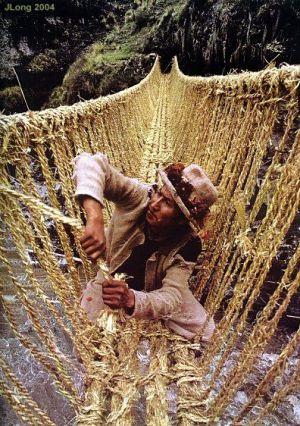
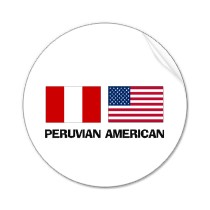
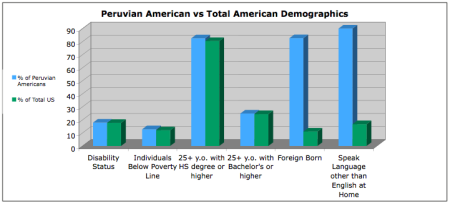
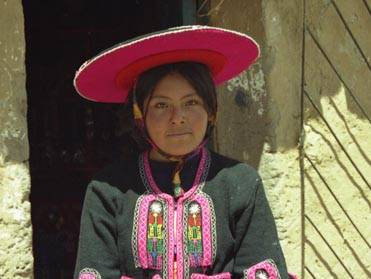

Leave a comment